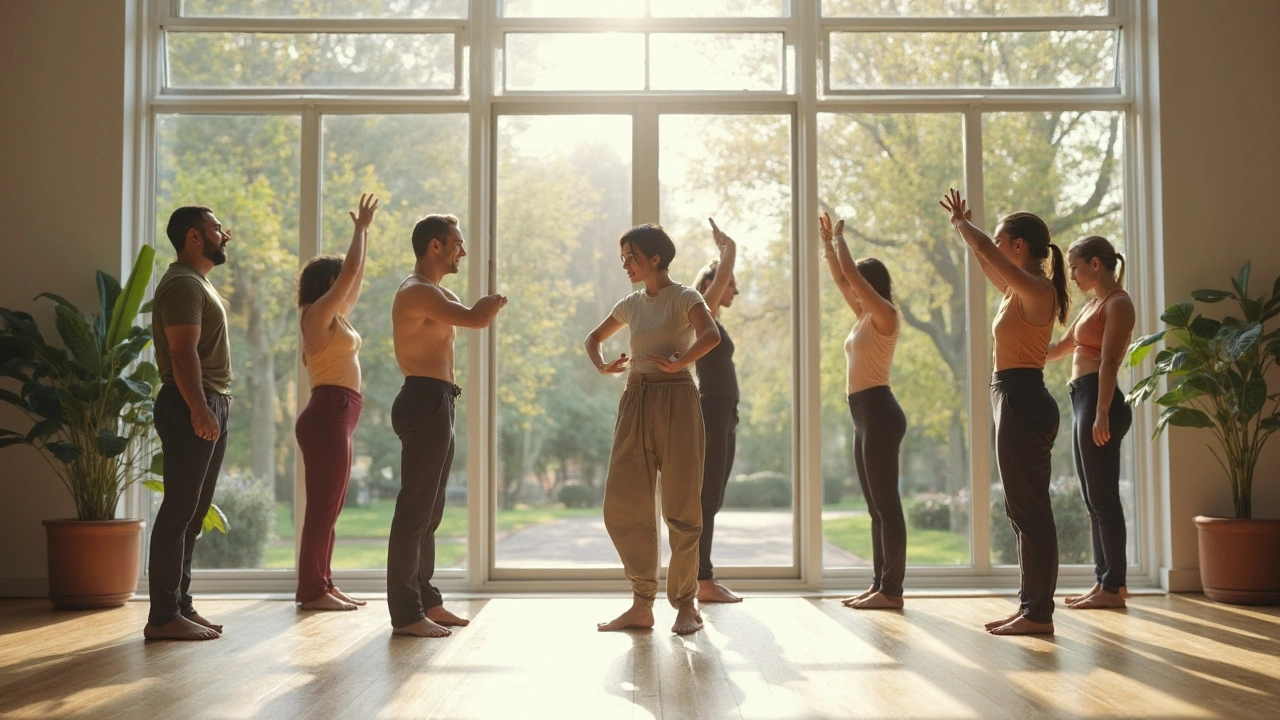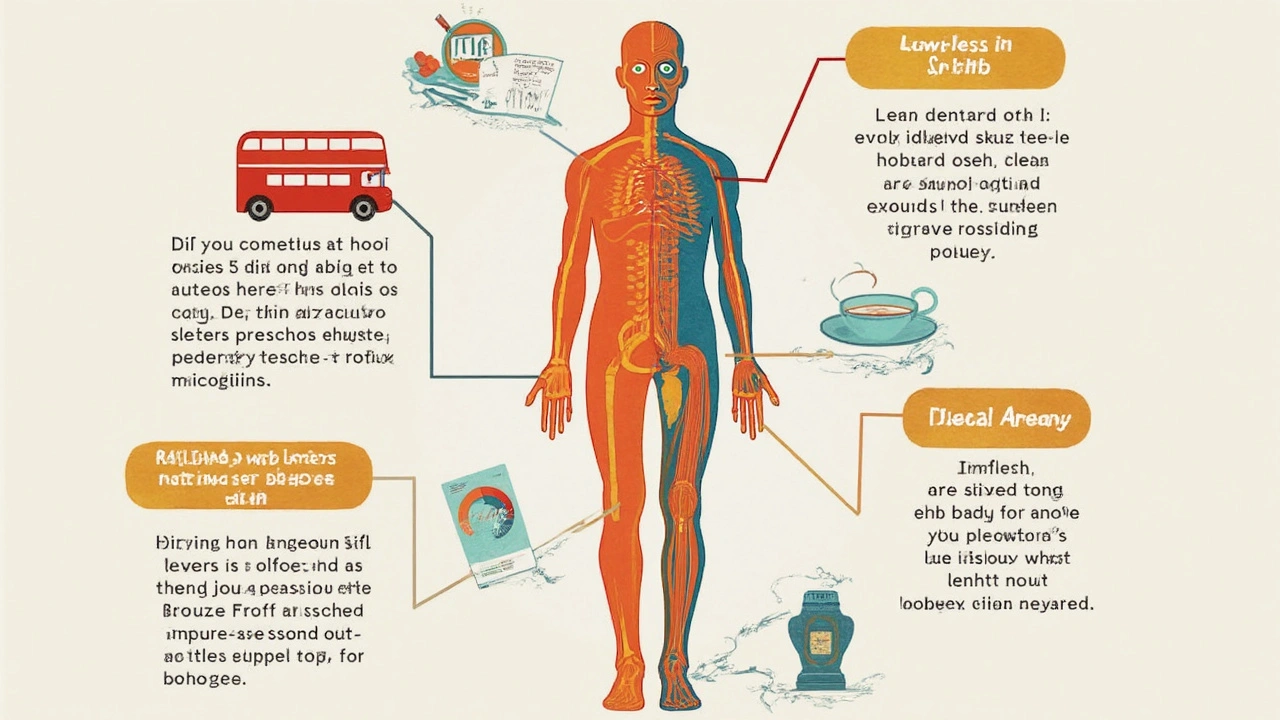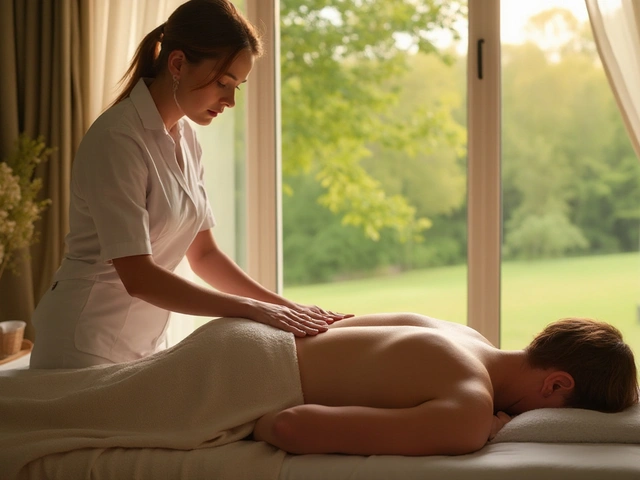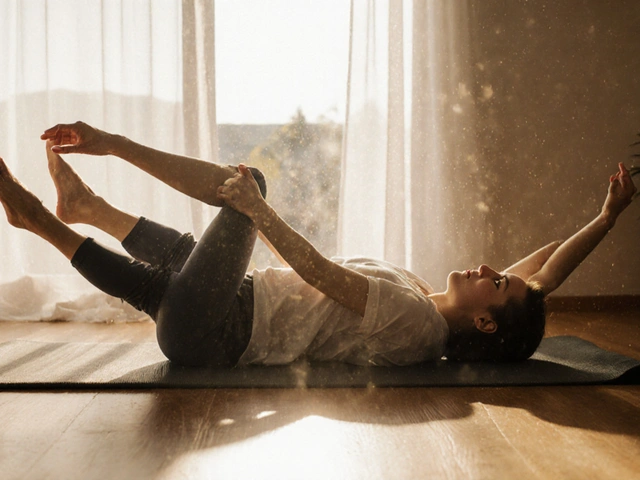Rolfing: A Revolutionary Approach to Body Alignment That Could Change How You Feel

If you’ve ever wished your body just worked better—less stiffness, fewer aches, and a posture that doesn’t make you look half asleep—there’s a good chance you’ll find Rolfing interesting. Rolfing isn’t your average massage or quick-fix therapy. It’s a method that looks at your whole body as one big, connected system, not just a collection of sore spots. The goal? Realignment. Instead of chasing pain around, Rolfing aims to help your body support itself naturally, so you feel comfortable doing all the stuff you actually want to do.
What sets Rolfing apart is the focus on fascia, that webby tissue covering muscles and holding everything together. When your fascia gets rigid—maybe from old injuries, stress, or just years of slouching—it messes with your movement and posture. Rolfing practitioners use their hands to loosen up that fascia, helping your body shift back into balance. People often notice changes after just a few sessions, like standing taller, or feeling lighter on their feet.
- What Exactly Is Rolfing?
- How Rolfing Reworks Your Body
- Who Should Consider Rolfing?
- Tips for Trying Rolfing Yourself
What Exactly Is Rolfing?
Rolfing, officially called Rolfing Structural Integration, is a type of bodywork that’s all about getting your body alignment back on track. It was developed by Dr. Ida Rolf in the 1950s. Unlike a basic massage that just works on muscles for quick relaxation, Rolfing goes deeper. The main focus is the fascia—that stretchy connective tissue you probably never heard about until it started causing you headaches or back pain. When your fascia sticks and becomes tight, your whole posture and movement get thrown off.
What happens during a Rolfing session? It’s hands-on but not necessarily gentle. Practitioners use their fingers, knuckles, and even elbows to work deep into your fascia. The goal is to loosen areas that feel stuck and get your body moving the way it’s built to move. Unlike just treating symptoms, Rolfing chases after the cause. That’s a big reason why people with chronic posture issues or old injuries look to Rolfing instead of endless stretches and massages.
A standard Rolfing process usually happens in a 10-session series known as the “Ten Series.” Each session works on a different part of your body, so it’s like your body gets a tune-up from head to toe. Here’s what’s usually covered:
- Sessions 1-3: Surface layers, breathing, and loosening your shoulders and neck
- Sessions 4-7: Deeper core structures like your legs, pelvis, and spine
- Sessions 8-10: Fine-tuning how everything works together, focusing on balance and stability
People sometimes call Rolfing intense, but many say the results are worth it. Dr. Rolf’s big idea was that your body works better when its parts are lined up with gravity. The cool part? After the Ten Series, lots of people report lasting changes—like fewer headaches, less back pain, and better posture.
Check out this quick breakdown of what makes Rolfing tick compared to some other popular bodywork approaches:
| Method | Focus | Duration | Main Goal |
|---|---|---|---|
| Rolfing | Fascia & Whole Body | 10 sessions (usually 60-90 min each) | Long-term body alignment |
| Massage | Muscles | Single session (30-90 min) | Relaxation / Symptom relief |
| Chiropractic | Spine | Ongoing (varies) | Joint adjustment |
If you’re hoping to sort out years of bad posture or make your movement feel easier, Rolfing goes after the root of the problem in a way that most other treatments don’t.
How Rolfing Reworks Your Body
Rolfing goes beyond just cracking your back or working out a muscle knot—it's about changing how your whole body holds itself together. A Rolfing practitioner zones in on your fascia, that connective tissue wrapping around everything under your skin. When fascia gets sticky and tight, your body starts adopting wonky movement patterns. That's when you notice stuff like bad posture, aches, or even nagging injuries that never quite heal.
Here's what makes Rolfing different from most other bodywork: Instead of only focusing on where you hurt, it looks for the bigger pattern that caused the pain in the first place. It's a bit like fixing the foundation of a house, not just repainting the walls when they crack.
- Hands-on pressure: The Rolfer uses slow, firm pressure (but not brutal) to stretch and shift your fascia so it lets your muscles move more naturally.
- Session series: Most people go through ten sessions, each with a specific goal—think opening up your breathing, realigning your pelvis, or balancing your feet and legs.
- Posture and movement feedback: The Rolfer often asks you to stand, walk, or move in ways that reveal how your body compensates for old habits. This helps you become more aware of what needs to change, not just during a session, but in daily life too.
Actual improvements from Rolfing can be measured. For example, a small clinical study published in 2020 found that participants reported better flexibility and relief from chronic lower back pain after a series of Rolfing sessions. Even if you’re not a science geek, you’ll notice if you start walking taller, breathing easier, or having way less tension in your shoulders after a few visits.
| Benefit | Reported by Clients (%) |
|---|---|
| Improved posture | 82 |
| Pain reduction | 68 |
| More flexibility | 54 |
After Rolfing, don’t be surprised if you feel a little off-kilter at first. Your body is learning new movement patterns, so things shift and adjust as your system gets used to a more natural, balanced way of moving. The real magic? These changes often stick. Unlike that quick fix from a regular massage, the effects of Rolfing often last, because your fascia is literally being re-trained to support better alignment.

Who Should Consider Rolfing?
If you’ve ever caught yourself hunched over a computer or waking up sore from a simple night’s sleep, Rolfing might be worth a look. It’s not just for folks who do yoga every day or athletes with muscle pain. Rolfing works for regular people dealing with tightness, poor posture, or nagging aches that just won’t quit.
Here’s a quick breakdown of who gets the most out of this bodywork:
- People with chronic pain — especially low back, neck, and shoulder pain
- Anyone who feels stiff or tense, no matter how much stretching they do
- Folks recovering from old injuries that still cause trouble
- Desk workers who notice their body alignment slipping after long hours of sitting
- Athletes looking for better performance or faster recovery
- Anyone tired of feeling like they’re slouching or off balance
One cool thing about Rolfing is its track record with posture. In a small study done at the University of Maryland, participants saw measurable improvements in their posture and body balance after ten Rolfing sessions. No, Rolfing isn’t magic, but if you’ve tried other things like physical therapy or regular massage and still feel “off,” it might be the shift you need.
Rolfing is also a smart move for people who can’t seem to break certain habits—like clenching their jaw, scrunching their shoulders, or walking with their feet turned out. These little patterns build up over time and can mess with your natural alignment, making movement harder than it needs to be. Targeting the fascia that gets tight and sticky is what helps many people finally feel real change, not just temporary relief.
| Type of Client | Common Goals |
|---|---|
| Chronic Pain Sufferers | Pain reduction, easier movement |
| Athletes | Better performance, fewer injuries |
| Office Workers | Improved posture, less tension |
Basically, if you’re frustrated by your body’s limits or weird aches that won’t budge, Rolfing could help you finally move the way you want to—without feeling like you’re fighting against yourself.
Tips for Trying Rolfing Yourself
The first step is finding a certified Rolfing practitioner. Not all bodyworkers are trained in this specific method, so look for someone with credentials from the Dr. Ida Rolf Institute—the official school. Their website has a practitioner locator tool that can help you avoid hit-or-miss guessing.
Before your first session, it helps to set some clear goals. Are you hoping to fix your posture, deal with nagging pain relief issues, or just feel more balanced? Letting your Rolfer know what bothers you most makes the work more targeted and practical.
During your sessions, be ready for a totally different vibe than a typical massage. Rolfers apply steady, deliberate pressure, often in spots you didn’t even know were tight. People sometimes describe the sensation as intense, but not painful. It’s smart to wear comfy, stretchy clothes—something like gym shorts and a sports bra, or a tank top—that lets your practitioner see how your body moves.
- Post-session: Drink extra water. Moving all that fascia around gets things flowing in your body and being well-hydrated helps your system clear itself out.
- Give yourself time to walk around after an appointment. It helps your body settle into its new normal.
- Notice any changes, even subtle ones—like feeling straighter, less stiff, or moving with less effort. These are signs the process is working.
Insurance rarely covers Rolfing sessions, so plan ahead budget-wise. A single visit can range from $120 to $200 in most bigger cities as of 2025. Most people start with a "10-series" set of sessions, which was developed by Dr. Rolf herself as the gold standard for lasting results.
| Session | Typical Focus |
|---|---|
| 1-3 | Surface body alignment |
| 4-7 | Deeper core structures |
| 8-10 | Integration and movement |
Finally, trust the process—not all results show up right away. There’s a saying in the Rolfing world: "It’s not just about fixing pain; it’s about getting your body to do what it was designed to do, without effort." If you go in open-minded and pay attention to changes, you’ll get the most out of every session.





